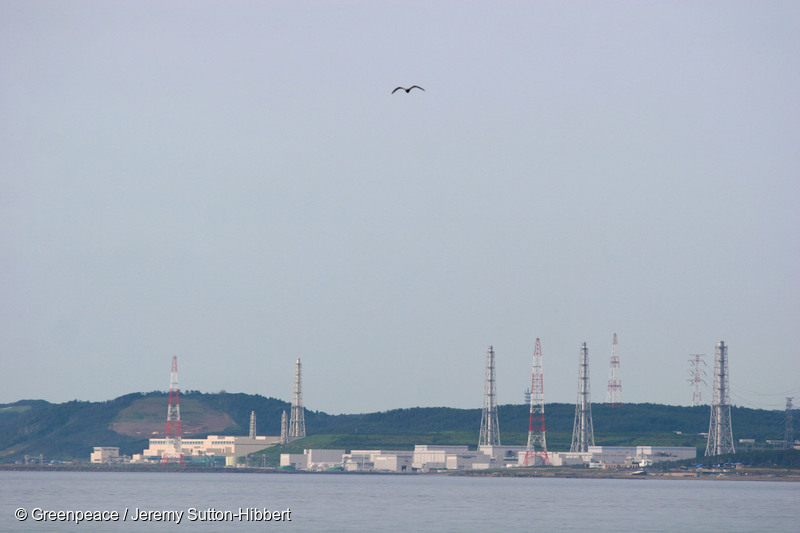26th August 2019, Tokyo, Tokyo Electric Power Company Holdings Inc. (TEPCO) has issued an ultimatum to Kashiwazaki mayor Masahuro Sakurai on the utility’s Kashiwazaki Kariwa nuclear power plant. In the face of pressure to release a decommission plan, the utility company has indicated it will only consider the decommissioning discussion “within five years of a restart of reactors six and seven.” Greenpeace Japan condemns this cynical move, which effectively uses decommissioning as a bargaining chip in the decision to approve the plant’s restart.

The Kashiwazaki Kariwa power plant in Niigata prefecture has seven Boiling Water Reactors. Three of the reactors have not operated since 2007 when the plant was hit by the Chuetsu-oki earthquake, while the other reactors have not operated since 2011/12.
The decision by TEPCO not to provide a detailed timetable for decommissioning is inexplicable given that the Mayor of Kashiwazaki has requested such a commitment. TEPCO has failed over the past years to secure approval for the restart of Kashiwazaki Kariwa reactors 6&7. In 2012 TEPCO predicted that restart of the reactors would be in 2013; in it’s business plan in May 2017, TEPCO gave a restart date of units 6&7 in 2019, but also 2020 and 2021.(1) TEPCO has been under pressure from the population of Niigata, the majority of whom are opposed to any reactor operations at Kashiwazaki Kariwa. Currently, investigation committees of Niigata prefecture are reviewing the Fukushima Daiichi disaster and its consequences. They are expected to report back to the prefectural government no earlier than summer 2020. Only then is it expected that the governor of the prefecture will indicate his view on restart of reactor 6&7.
“TEPCO has once again failed the people of Niigata and Japan by its decision to link decommissioning to approval for restarting units 6&7. The many unresolved safety issues at Kashiwazaki Kariwa, including major earthquake risk mean there is no justification for any restart. If TEPCO is to re-invent itself as a leading renewable energy utility, it needs to permanently shutdown all its reactors,” said Shaun Burnie, senior nuclear specialist Greenpeace Germany.
There are multiple seismic fault lines in the area of the Kashiwazaki Kariwa site, including large-scale submarine active faults, with four main ones, three of which run along either edge of the Sado Basin, a depression between Sado Island and mainland Kashiwazaki.(2) The enormous seismic risks at the Kashiwazaki Kariwa site remain unresolved and are certain to dominate the debate about the safety of any reactor restart, including the ongoing legal challenges. [1]
TEPCO’s principal electricity market is metropolitan Tokyo – a city that is planning to move towards 100% renewable energy in the coming years. The future is clear for Japanese energy policy, and should be for TEPCO.[2]
Notes:
1 – see “TEPCO’S ATOMIC DELUSION”: Greenpeace Japan, 25 June 2018.
https://www.greenpeace.org/static/planet4-japan-stateless/2019/08/3d2e8976-atomic_delusion.pdf
2 – Katsuhiko Ishibashi and Mitsuhisa Watanabe, “Earthquakes and Ground Condition Just how safe is the Kashiwazaki-Kariwa Nuclear Power Plant?”, CNIC, March/April 2008 Nuke Info Tokyo No. 123, see http://www.cnic.jp/english/newsletter/pdffiles/nit123.pdf
